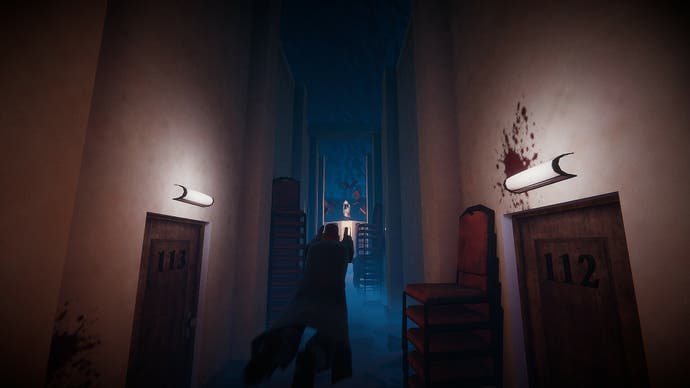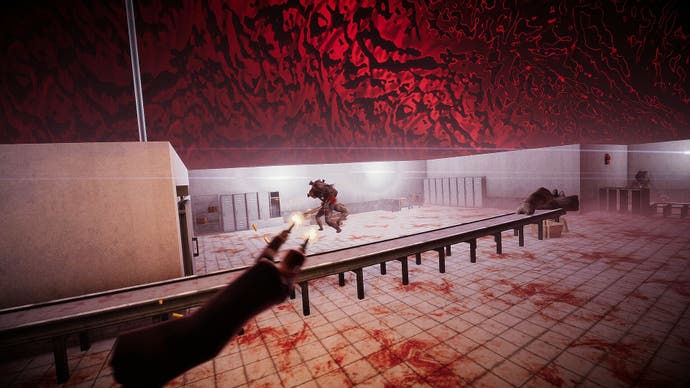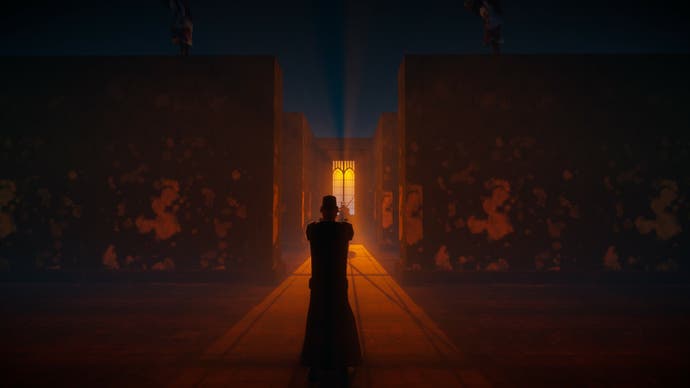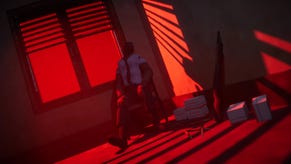El Paso, Elsewhere's mix of Blade and old-school Max Payne is as good as it sounds
Rockstar energy.
The sands shift, the wheel turns, and time marches onwards: the PS2 is officially so old it's cool again. Sorry. But also, deal with it? Because look at the games we get to play now: El Paso, Elsewhere is the latest of so many various, vaguely 00s-inspired games to emerge from a new generation of developers' new wave of nostalgia recently, but it's also, from what I got to play out at GDC, an absolutely shining example. Everything was better back in my day, of course, whenever my day is for you. But this one's for real.
El Paso's elevator pitch is Blade plus Max Payne, plus an actual elevator, taking you down through the bowels of some Texas non-place hotel to its own pumping, neon-hued underworld - all 46 floors of it. This is Xalavier Nelson Jr's latest thing, the lead at his Strange Scaffold studio who was also behind viral jokes like An Airport for Aliens Currently Run by Dogs and the meatier, frantically clever Space Warlord Organ Trading Simulator.
Nelson Jr is surging to the front of the pack of the new cool kids of game dev, just 25 and with an effervescent kind of intelligence to go with all the youthful charisma - as I played, he relentlessly peppered me with over-the-shoulder thoughts on game design and reasoning behind the finer details of El Paso's dodge rolls and bullet-time mechanics, while absent-mindedly snacking in a few spare seconds and juggling his next appointments.
The sense is this is a game born with a kind of genius' immediacy: straight from the mind to the screen, mechanics layering and blossoming, too much coolness and cleverness to get over all at once. El Paso, Elsewhere has a hectic kind of flow, enemies lurking around corners, behind low-poly coffins, the other side of skewiff, Double Fine windows. There's a story of addiction and regret - or something like that - played out in angular, wild west cutscenes and grizzled self-narration, there's a trench coat and sunglasses and original hip-hop on the soundtrack. Then there's werewolves and stakes and guns.




El Paso's guns are guns. Booming, blocky video game objects that bellow out into the darkness, ammo and health bleeping on collection like a classic Rockstar pickup - the sound of the 00s right there - and then a swirling mix of enemies, from those rapid wolves to spinning, flying witches (I think?!) giving a tiny taste of bullet-hell projectiles and haunted suits of armour that only move if you catch them with a stray shot and cause all kinds of clanging trouble when you do. A sense of rhythm and space becomes essential, kiting enemies back through corridors or round El Paso's looping, reflexive, rooflessly out-of-space levels, rolling through one-use stakes and shotguns and, of course, Uzis to preserve whatever ammo you have.
It's all simple stuff really, bashed together and set in motion - again, straight from the mind to the screen. Vampire hunter. Rockstar games. Low-poly art. Guns. Bullet time. Hip-hop. Sold.



